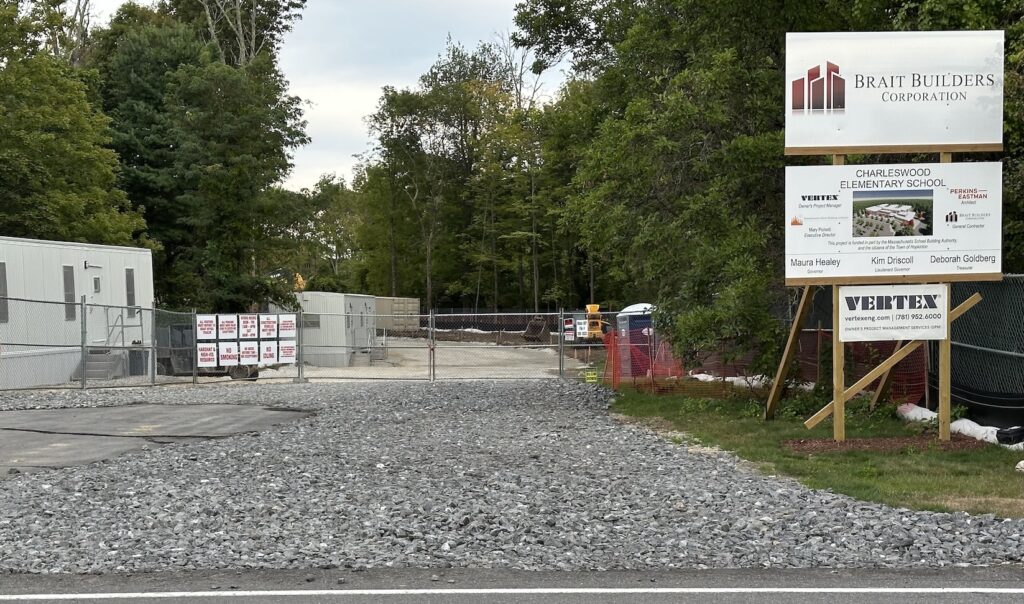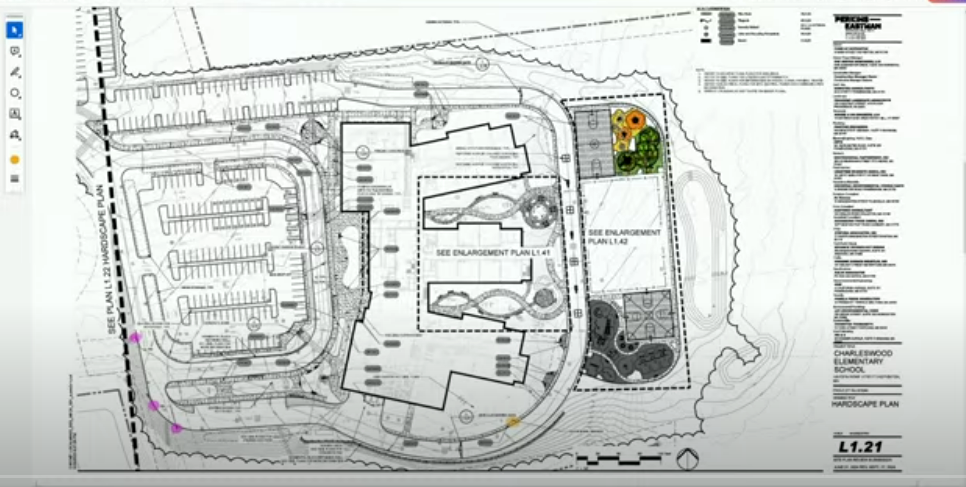On Wednesday, the Elementary School Building Committee got an update on tweaks to its preferred schematic design, reviewed an energy and environmental credit checklist, and learned more about the Massachusetts School Building Authority’s reimbursement formulas.
Noting that the Hopkinton School Committee and Select Board both endorsed its selection of a design for the proposed Elmwood School replacement, the ESBC looked at what VERTEX project director Jeff D’Amico called “fine-tuning of the floor plan.”
Robert Bell, Perkins Eastman’s educational programmer/principal in charge, explained that in submitting a report for the chosen “Village East,” plan on Hayden Rowe Street, “architectural responses” to the desired educational programming must be included.
Some of what Bell called “tiny changes” to the schematic design included moving the media center to the other side of the corridor to make it more centrally located, shortening the academic wings for “more intimate classroom neighborhoods,” disbursing special education rooms to integrate as much as possible, and moving music out of the cafeteria and academic wings to near the stage.
The proposed three-story building would house Grades 2-3-4 and have three academic wings on each floor.
ESBC vice chair Tiffany Ostrander said much of the feedback the committee received from town boards was positive. Feedback mostly was about making prudent fiscal decisions and encouraging energy efficiencies and sustainability.
LEED checklist reviewed
Included in the Preferred Schematic Report (PSR) submitted to the MSBA on March 2 is a letter stating an intention to get 2 percent reimbursement through the Leadership in Energy and Environmental Design (LEED) program.
A project can earn a certain level of points based on efforts in categories like site, transportation and location (27 points), energy management (31 points), indoor environmental quality (16 points), materials (13 points), innovation (6 points) and regional priority (4 points).
Perkins Eastman project manager Daniel Colli said that using conservative estimates, he expects the Hopkinton project would fall into the Silver Certification category, which represents 50-59 points. The project could get higher points for things like a power purchase agreement or solar panel installations.
The difference between Silver Certification and Gold Certification (60-70 points) is not monetary and more of a “bragging rights” item — the color of the plaque on the wall.
D’Amico said today’s silver classification would have been rated platinum five years ago as building code upgrades are made and different iterations occur.
Certain checklist items like reduction of parking or location of bike facilities would not be feasible with this project. The latter calls for installation of showers, which would not be age appropriate.
The project also would not receive any points for protecting habitat, as it includes building an access road. On the other hand, it likely will get credit for having open space on the site.
There may be variations as the project is implemented, Colli said, resulting in either a loss or gain of points from what it is projected now.
The certification plan must be resubmitted once it is determined how everything ends up as the building is constructed, he added.
MSBA reimbursement formulas presented
In other business, D’Amico outlined what he called a “complex” template used by the MSBA when calculating reimbursement for projects like this one.
The current estimated project cost is $174 million, using $492 per square foot. The site has 104,900 square feet.
He said the estimated construction costs total $135 million and do not include things like testing, inspecting and moving.
Factored in the overall budget are all contingencies at 6 percent and soft costs at 3 percent. These may be “dialed back” in the future, D’Amico said.
D’Amico noted the MSBA pays up to $395/square foot per construction costs and considers certain items non-reimbursable.
Things like swing spaces, legal fees and moving costs aren’t reimbursable, for example.
Other things deemed ineligible in Hopkinton amount to 5,600 square feet and include 4,000 square feet of hallway, storage in the gym, an administrative/guidance area, a library books room and a family resource room. He said his group would try to push for these items to get lower numbers.
The bottom line, D’Amico added, is that reimbursement of $44.9 million (26 percent) is projected.
“You are going to get about as curvy a road you can take to be able to explain” how the various MSBA formulas come to that conclusion, D’Amico said.
More meetings planned
The ESBC next will meet on the following Tuesdays beginning at 6 p.m.: March 28, April 11 and April 25.
The next public forum about the project will be held on Tuesday, April 4, and will be entirely virtual, starting at 6:30 p.m.



















0 Comments